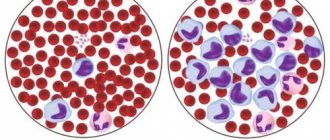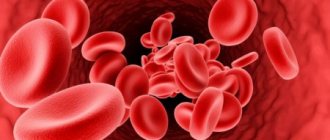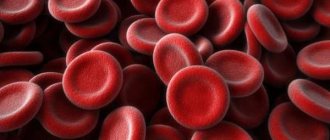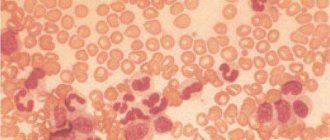Calcium deficiency in women: causes
The lack of the element in question in the body may be due to the following factors:
- Strict diet. Dietary nutrition often excludes the consumption of many foods that are healthy and necessary for the normal functioning of the body.
This is especially true for vegan diets that do not include dairy products.
- Bad habits. Consuming large amounts of alcohol- and caffeine-containing products and smoking contribute to the release of calcium from the body.
- Eating foods containing phosphorus , which interferes with calcium absorption. For example, this applies to carbonated drinks.
Calcium deficiency caused by carbonated drinks
- Taking certain medications (listed above) reduces Ca levels in the blood.
- Unfavorable ecology , heavy metals and toxic elements prevent calcium from being absorbed or remove it from the body.
In addition, active physical activity, constant overheating of the body, sudden weight loss can also cause a lack of calcium in the blood.
Excess calcium in the body: symptoms in women
Excess Ca in the blood is no less dangerous than its deficiency. An excessive amount of the element in question in the body manifests itself as:
- excessive growth of bone tissue, leading to skeletal deformation;
- increased neuromuscular excitability, manifested in the form of involuntary muscle contractions;
- spasm of smooth muscles, resulting in constipation, attacks of nausea and vomiting, as well as frequent urination;
- increased secretion of enzymes, which leads to the development of pancreatitis and its complications;
- disruption of the functioning of the central uneven system, leading to hallucinations of various types (comas and loss of consciousness are possible);
- abnormalities in the functioning of blood vessels and cardiac muscles, leading to cardiac arrest.
If signs of hypercalcemia appear, emergency medical care is necessary, as death is possible.
Symptoms of high blood calcium
The doctor usually finds out one of the main reasons for this condition when collecting anamnesis - for example, the patient’s diet contains too much calcium-containing foods, or the patient is taking pharmacological agents that contain a high concentration of calcium. However, the most effective and reliable method to find out whether a person really has high calcium is a general blood test. During diagnosis, two types of calcium are observed - ionized and total.
The most common symptoms of hypercalcemia from the gastrointestinal tract:
- loss of appetite;
- pain in the abdomen;
- nausea;
- frequent constipation;
- vomit.
If there is an increased content of this element in the blood, dehydration may occur. Symptoms of this condition are usually pronounced - dizziness, loss of consciousness, weight loss.
If the level of calcium in a person’s blood is excessively elevated, conditions develop in which there is a disruption in brain function:
- weakness;
- emotional instability;
- hallucinations;
- confusion;
- delusional states;
- coma.
Symptoms such as heart rhythm disturbances and tachycardia can also be noted. In advanced cases, death occurs.
There is also a condition in which the level of Ca in the patient’s blood is constantly elevated - this is chronic hypercalcemia. In this case, stones that contain calcium begin to form in the kidneys. Symptoms: severe pain in the lumbar region, swelling, urinary retention.
Calcium intake rates for different groups of people
Lack of calcium in the body: symptoms in women
Ca deficiency in the body, like any other pathological process, has its own manifestations. Symptoms of calcium deficiency are:
- general weakness and impairment of performance;
- increased irritability;
- dry skin and increased flaking;
- excessive sweating of the scalp;
- brittle nails;
- rapid tooth decay;
- numbness of the limbs and face;
- increased blood loss during menstruation;
- violation of bone integrity;
- abnormalities of the heart and blood vessels;
- decreased blood clotting ability;
- the occurrence of cataracts;
- disruption of the immune system;
- increased sensitivity to cold.
General weakness and decreased performance are the first signs of calcium deficiency in the body.
In the first few years of life, girls may experience developmental defects, for example, improper formation of the skeleton and teeth.
The role of calcium in a woman’s body - what does it affect?
Calcium takes part in regulating the functioning of almost all human organs and systems. In the blood, this element can be in active (ionized) and inactive (calcium lactate, phosphate, carbonate) forms.
The importance of microelement for the body is as follows:
- ensuring the strength of bones, teeth, good condition of nails and hair;
- maintaining stable functioning of the cardiovascular system and the strength of vascular walls;
- ensuring muscle contractility;
- active participation in blood clotting processes and iron metabolism;
- maintaining endocrine function.
For women over 50 years of age, calcium plays a special role, in particular it:
- prevents the development of osteoporosis, since during menopause, due to decreased estrogen production, bones become excessively brittle;
- reduces the risk of cardiovascular diseases, since a sufficient amount of calcium guarantees normal contraction of the heart muscle;
- normalization of body weight, since this element regulates the production of parathyroid hormone, which promotes lipid synthesis.
But this does not mean that you need to immediately rush to the pharmacy for calcium supplements, since its excess in the body interferes with the absorption of iron and zinc (which can lead to anemia), contributes to the development of constipation and urolithiasis.
What flushes calcium from the body
Food not only supplies calcium to the body, but also removes it. Consumption of the following types of foods can lead to a deficiency of the element in question:
- Tea.
Drinks based on black and green tea in small quantities remove calcium from the body. After drinking 10 cups of tea, a person loses 6 mg of microelement.
- Alcohol.
- Oatmeal.
- Smoked products.
- Some pharmacological agents.
- Excessively salty foods.
Salt and sugar wash calcium out of the body.
Strict diets and excessive sugar consumption also lead to increased loss of calcium.
Blood test for calcium
A blood test to determine the amount of Ca is a procedure that allows you to determine the level of total Ca in the blood structure. Total calcium includes:
- Ionized Ca. This type of microelement makes up 1/2 of the total Ca.
- Ca is bound to protein, mainly albumin. The volume of such an element is 40% of the total quantity.
- Microelement included in anionic complexes – 10% of the total volume.
It is recommended to monitor Ca levels, as they are involved in many vital processes in the body.
Blood test to detect ionized calcium
Ionized Ca has no connection with other substances and circulates freely in the blood. This form of microelement is involved in all vital processes.
An analysis to determine the type of calcium in question allows you to evaluate calcium metabolism in the body. This analysis is prescribed when:
- undergoing therapy after surgery or serious damage to the body, for example, a major burn;
- diagnosis of cancerous tumors in the body is carried out;
- the performance of the parathyroid gland is assessed;
- hemodialysis is necessary;
- The following medications are used: “Heparin”, “Magnesia” and drugs containing calcium.
An analysis of the blood composition for ionized Ca is carried out in conjunction with the determination of the content of total calcium and blood pH. There is an inverse relationship between ionized Ca and blood pH. Reducing the amount of ph by 0.1 units. leads to an increase in calcium levels by 1.5-2.5%.
A blood test to determine the level of calcium in it is prescribed for cancer.
When should you determine the amount of calcium in the blood?
Experts prescribe a test to determine the amount of calcium in the blood of women (deviations from the norm are natural here) in the following cases:
- signs of increased or decreased Ca levels in the body;
- cancerous tumors;
- stomach and duodenal ulcers;
- decrease in the amount of albumin;
- preparation for surgery;
- decreased muscle tone;
- hyperthyroidism;
- pathology of the urinary system;
- pain syndromes in the bones;
- abnormal conditions of the cardiovascular system;
- increased urine volume;
- paresthesia;
- convulsive syndrome;
- screening for osteoporosis.
Read the popular article in the category: An effective drug - Exoderil varnish for nail fungus. Reviews, price.
In women, calcium in the blood may have deviations from accepted norms in other pathological processes. The listed anomalies also have other manifestations, on the basis of which a specialist has the right to suggest a diagnosis and refer for additional examination.
Preparing for tests
In order for the results of the tests to be reliable, it is necessary to prepare for them. This requires:
- stop drinking alcohol, fried and fatty foods;
- exclude heavy physical activity and psychological shocks;
- do not eat food on the day of testing;
- refrain from other types of examination a few days before donating blood.
Neglecting these rules will lead to false results , which in turn will complicate the correct diagnosis.
What affects test results
Test results are affected not only by improper preparation for them, but also by the use of pharmacological agents. To obtain reliable blood test results, you should stop using medications 7-14 days before donating blood. If this is not possible, you should inform your doctor about all medications you are taking.
The use of these substances leads to an increase in the element in question in the blood:
- vitamin A and D;
- teslak;
- tamoxifen;
- parathyroid hormone;
- progesterone;
- lithium;
- 13-cis-retinoic acid;
- ergocalciferol;
- dihydrotachysterol, etc.
Tetracycline antibiotics reduce calcium levels.
The following components reduce calcium levels in the blood:
- sulfuric acid salts;
- salts and esters of oxalic acid;
- fluorites;
- tetracycline antibiotics;
- plicamycin;
- methicillin;
- magnesium sulfate;
- phenytoin;
- isonicotinic acid hydrazide;
- insulin, etc.
Elimination of medications may be necessary after receiving the results of a clinical blood test for Ca.
Consequences of calcium deficiency in the human body
Lack of calcium, as one of the violations of its norm in the blood of women, men, and children, leads to such negative consequences as growth retardation, scoliosis, allergic manifestations, deformation of bone tissue, blood clotting disorders, capillary weakness and the occurrence of kidney stones .
The most serious consequences of hypocalcemia are osteoporosis and osteomalacia. These pathologies are characterized by softening of bone tissue.
Also, a deficiency of the element in question can lead to the development of multiple sclerosis.
Complications of increased calcium in the blood
Without proper treatment, hypercalcemia can cause:
Osteoporosis
Over time, bones can release excess calcium into the bloodstream. This makes the bones thin and less dense. People with osteoporosis have an increased risk of:
- bone fracture;
- curvature of the spine.
Stones in the kidneys
People with hypercalcemia are at risk of calcium crystals forming in the kidneys. These crystals can form kidney stones, which are often asymptomatic. They can also cause kidney damage.
Kidney failure
Over time, severe hypercalcemia can impair kidney function. When the kidneys cannot effectively cleanse the blood and remove fluid from the body, it is called kidney failure.
Nervous system problems
If left untreated, hypercalcemia can affect the nervous system. Possible consequences:
- dementia;
- weakness;
- coma.
Heart rhythm disturbance
The heart beats when electrical impulses pass through it and cause it to contract. Calcium plays a role in regulating this process, and too much calcium can lead to an irregular heartbeat.
Why calcium is not absorbed in the body: reasons
There are many different factors that lead to impaired absorption of calcium by the body. The main ones are:
- Improper functioning of the stomach.
As a result of poor nutrition and bad habits, insufficient production of hydrochloric acid and enzymes occurs in the stomach. Without these components, the body is not able to independently absorb various microelements, including Ca.
Fatty and fried foods interfere with the body's absorption of calcium
- Fried fatty foods.
Fatty acids, in contact with calcium salts, turn into complex deposits that are not only not absorbed by the body, but are also difficult to remove from it.
- Oxalic acid.
By consuming foods containing this substance, a person is unable to absorb calcium in the body. It, interacting with the acid in question, turns into difficultly soluble oxalate salts, which accumulate in the organs, leading to serious consequences.
- Vitamin D deficiency.
This is interesting: The first signs of toenail fungus
Vitamin D helps the body absorb calcium. Without this component, Ca is not retained in the body and is removed from it. Please note that in order to absorb vitamin D, the body must take in fatty acids contained in foods such as fatty fish, eggs and vegetable oils.
In order for calcium to be well absorbed, the body must have sufficient amounts of vitamin D.
- Climax.
When the amount of estrogen (female sex hormone) in a woman’s body decreases, a disturbance in the conductivity of calcium in the tissue occurs. The production of female hormones slows down when the reproductive system, due to age, stops functioning.
Also, oral contraceptives, corticosteroids and pathological processes in the gastrointestinal tract lead to impaired absorption of calcium. To exclude possible pathologies, you should undergo a preventive examination by specialists once a year.
Why does the body have excess calcium?
An absolutely healthy woman cannot have excess calcium - the body independently adjusts both the intake and consumption of this microelement. For hypercalcemia to occur, one or more factors must be present:
- hormonal imbalance (pregnancy, lactation, menopause);
- pathologies of the thyroid gland (hyperparathyroidism, endocrine neoplasia, diseases of the parathyroid gland);
- disturbance of mineral metabolism (osteomalacia, rickets);
- overdose of vitamin D (hypervitaminosis);
- long-term use of calcium gluconate;
- oncology of the mammary glands, respiratory tract.
Which calcium is better absorbed in the body?
There are various forms of calcium in modern pharmacological agents:
- calcium chloride;
- calcium carbonate;
- calcium citrate;
- calcium salt of gluconic acid (has a minimal percentage of digestibility).
Find out what doctors recommend when your fingernails peel. The main causes and treatment of peeling nails.
The absorption of different forms of Ca varies. Calcium chloride, when consumed orally, leads to pathological processes in the gastrointestinal tract, so its use is carried out in the form of injections. This type of microelement is well absorbed by the body, but is not always convenient to use.
Calcium carbonate is most often used in pharmacological preparations. This form of the trace mineral is produced from natural sources such as eggshells or pearls. The absorption of this substance occurs in the stomach.
Among oral forms of Ca, the body absorbs calcium citrate best. The digestibility of this form is two times higher than that of calcium carbonate.
Medicines for calcium deficiency in the body
In case of calcium deficiency, it is necessary to restore the balance of the microelement in the body as quickly as possible to prevent complications. As a rule, for this purpose, specialists use drugs containing Ca in various forms.
The most effective means for maintaining calcium levels in the blood (including women) are:
- "Calcium chloride".
1 ml of solution contains 0.1 g of active ingredient. The pharmacological agent is sold in the form of an injection solution.
- "Calcemin Advance".
A complex medication aimed at treating hypocalcemia and preventing it. In addition to Ca, the composition includes Mg, zinc, copper, B, and fat-burning vitamin D3.
- "Sea Calcium".
The drug is not a medicine, but during the period of therapy it is prescribed as an additional source of the missing microelement.
During the first month of therapy, it is important to check calcium levels in the blood weekly.
Treatment for high blood calcium
To achieve a long-term and sustainable effect, drug therapy must necessarily eliminate the vicious mechanism mentioned above. As a result of the action of a particular drug, it is necessary to either reduce bone resorption, or reduce the reabsorption of calcium in the kidneys, or reduce its absorption in the intestines. Thus, it is necessary to know the cause in order to eliminate high calcium levels in the blood.
Of course, treatment of hypercalcemia does not always necessarily involve the use of drugs. In some cases, for example, with tumor lesions of the bones, an increase in calcium in the blood can be prevented through surgery or radiation therapy.
But still, in most cases, various medications are used. Let's look at the most popular of them and explain the mechanism of their action:
- normal physiological isotonic sodium chloride solution. It dilutes calcium in the blood serum, reduces its concentration by increasing volume and stimulates urine excretion;
- a diuretic such as Furosemide reduces electrolyte reabsorption in the nephron loop and also increases the amount of urine;
- glucocorticoid hormones also prevent an increase in calcium in the blood. Their action is associated with antagonism towards vitamin D, and at the same time they also reduce calcium reabsorption;
- bisphosphonates (Aredia, Aclasta) act on osteoclasts, which are called “bone crusher” cells, they destroy bone tissue and promote the transition of the substance into a dissolved state. They react with the bone tissue matrix and make it more resistant to the action of osteoclasts, as a result of which resorption also decreases.
Don't forget about phosphorus. It is a calcium antagonist, and its administration in the form of phosphates reduces absorption in the intestine and normalizes the balance of the calcium-phosphorus ratio. Finally, in severe cases, it is necessary to use ethylenediaminetetraacetic acid (EDTA), and hemodialysis procedures are prescribed, in which calcium is directly removed from the blood plasma.
Calcium supplements for the prevention of osteoporosis in women
To prevent possible complications of hypocalcemia, it is necessary to take prophylactic medications containing various types of Ca and other components that help its absorption. Experts recommend using:
- "Calcemin".
The product is used to replenish and maintain optimal Ca levels in a woman’s body. The cost of one package in Russia is 450 rubles.
- "Vitrum calcium+D3".
A pharmacological agent that allows you to replenish the amount of the microelement in question. Since the product has a high degree of absorption by the body, experts recommend using it for girls during pregnancy and while breastfeeding. The price of one package is 400 rubles.
- "Calcium D3 nycomed."
A combined medication that allows you to regulate calcium-phosphate metabolism and replenish calcium deficiency in the female body. The average cost in Russia is 350 rubles.
- "Complivit calcium D3."
An effective remedy that accelerates the absorption of Ca in the gastrointestinal tract and replenishes the deficiency of this microelement. The use of the pharmacological agent in question makes it possible to regulate the metabolic processes of P and Ca. The price for one package varies from 150 to 400 rubles, depending on the locality.
- "Calcepan".
Biological food additive made on the basis of hematogen. It is used for both therapeutic and prophylactic purposes. The average price of one preventive course is 500 rubles.
Normal blood calcium levels in women by age (table)
The level of calcium in a woman's blood varies depending on her age. This allows us to identify pathological processes in the body, taking into account the age category. Optimal calcium levels are shown in the table.
| Age categories | Normal blood calcium levels in women |
| Girls in the first month of life | 2-2.6 mmol/l |
| Girls under 2 years old | 2.24-2.27 mmol/l |
| Girls under 13 years old | 2.19-2.8 mmol/l |
| Girls and women aged 13 and older | 2.1-2.56 mmol/l |
Deviations from the norm do not provide grounds for diagnosis. If there are changes in the level of the element in question in the blood, the amount of Ca in the bones is determined. This makes it possible to identify a pathological process in which bones release calcium to other body systems.
Normal after 40 years
Calcium is just as necessary in the female body as in the male body. A blood test determines two indicators: free and isolated calcium.
For women whose age exceeds 40 years, normal levels of free calcium are 2.16-2.51 mmol/l. The optimal values for isolated Ca are 1.13-1.32 mmol/l.
The level of calcium in the blood of women depends on their age
Normal after 60 years
The amount of free calcium in women's blood can be determined using a special analysis (for women, the norm of calcium in the blood is presented in the table above).
The optimal level of a microelement in the blood of an elderly woman should be 2.20-2.55 mmol/l. The normal level of ionized calcium in the blood of elderly women is 1.15-1.27 mmol/l.
Normal during pregnancy
During pregnancy, an analysis of the amount of the microelement in question in the blood allows you to determine whether there is a need for additional calcium intake.
The optimal amount of calcium for a pregnant woman is 2.15-2.5 mmol/l. If the readings fall below 2.1 mmol/l, you must immediately begin using calcium tablets.
Read the site’s popular article: Effective ways to boost an adult’s immunity at home.











